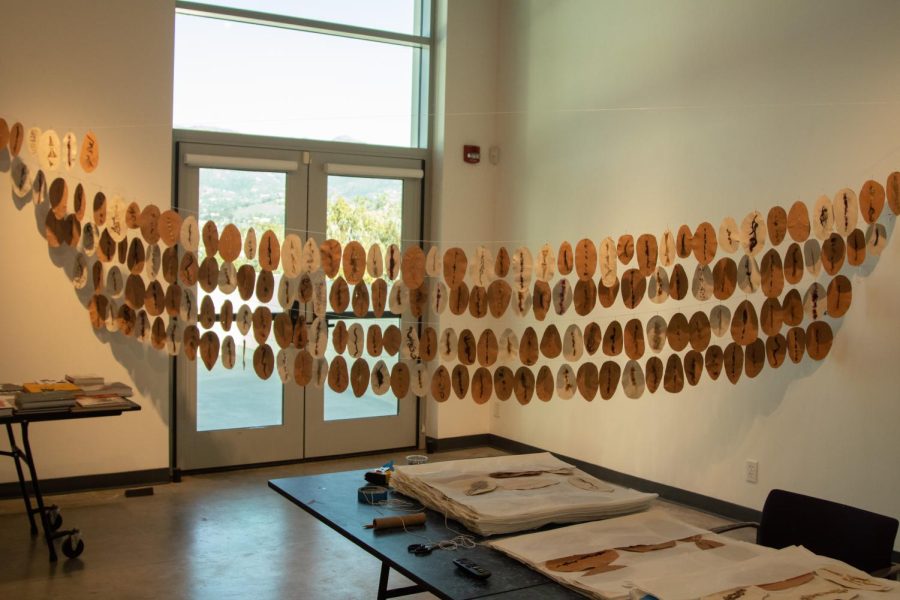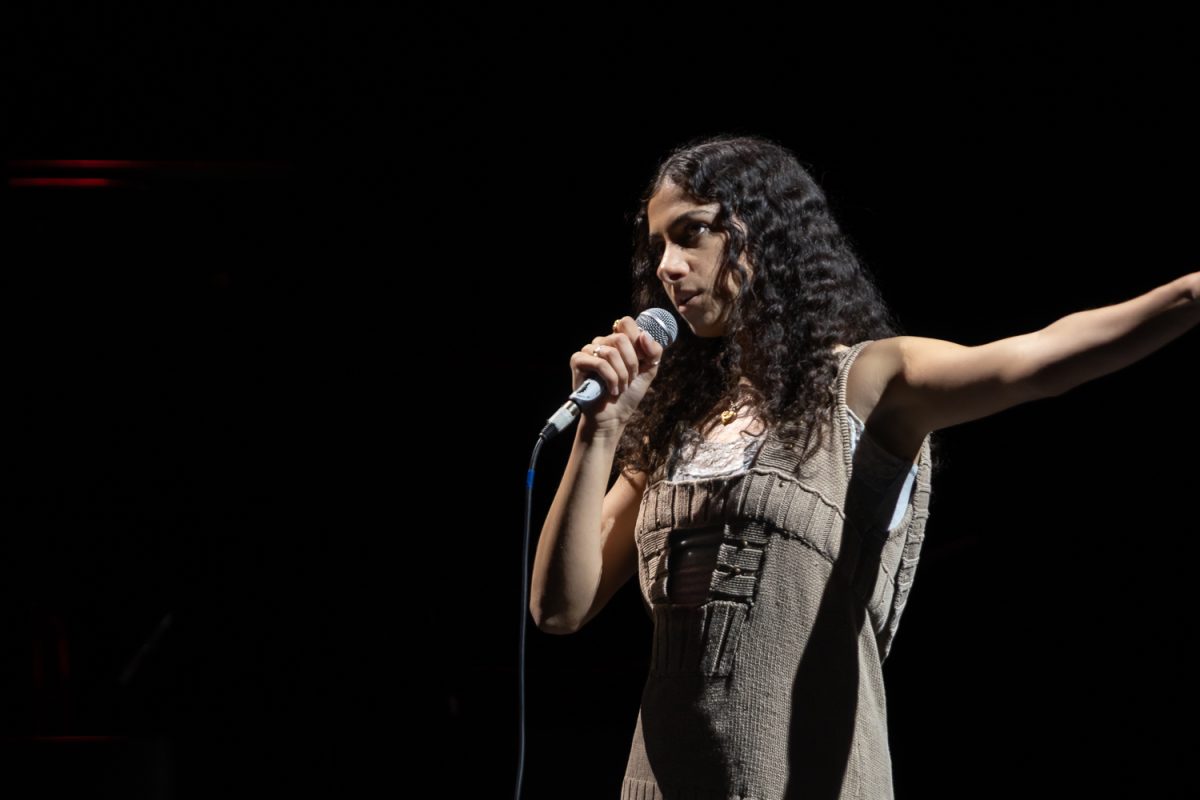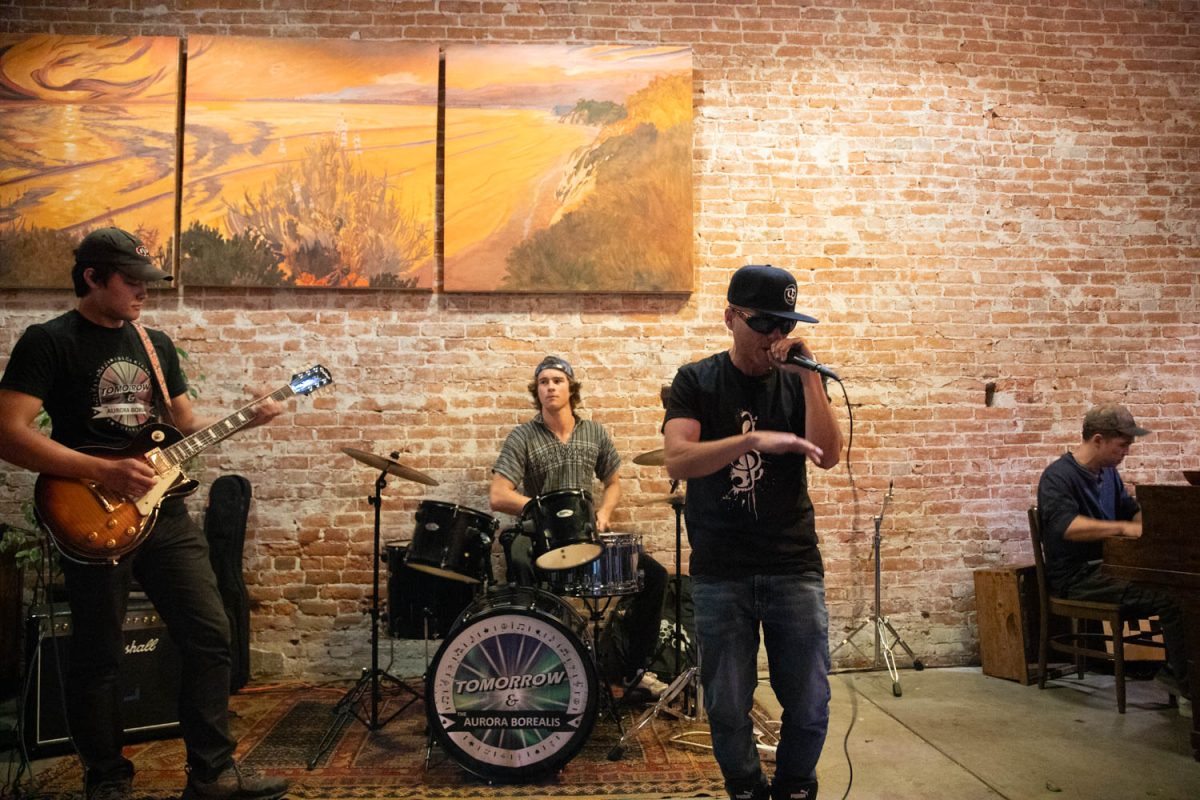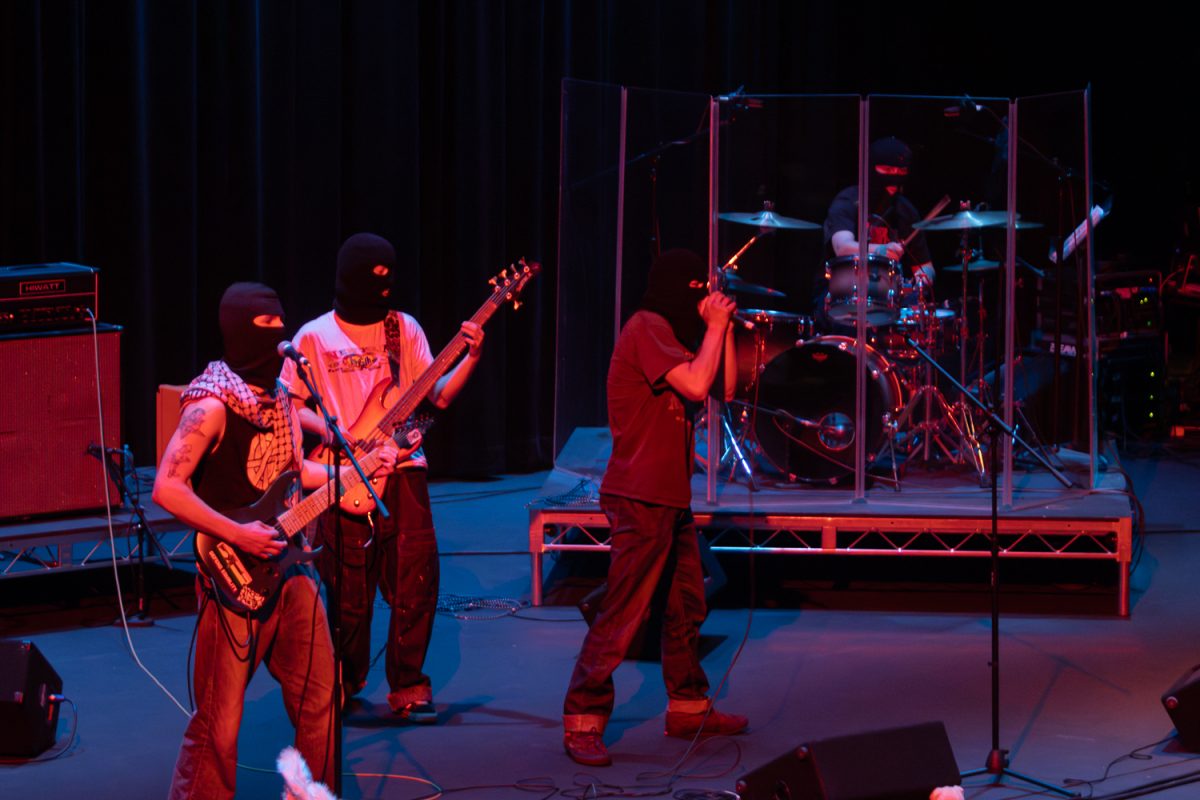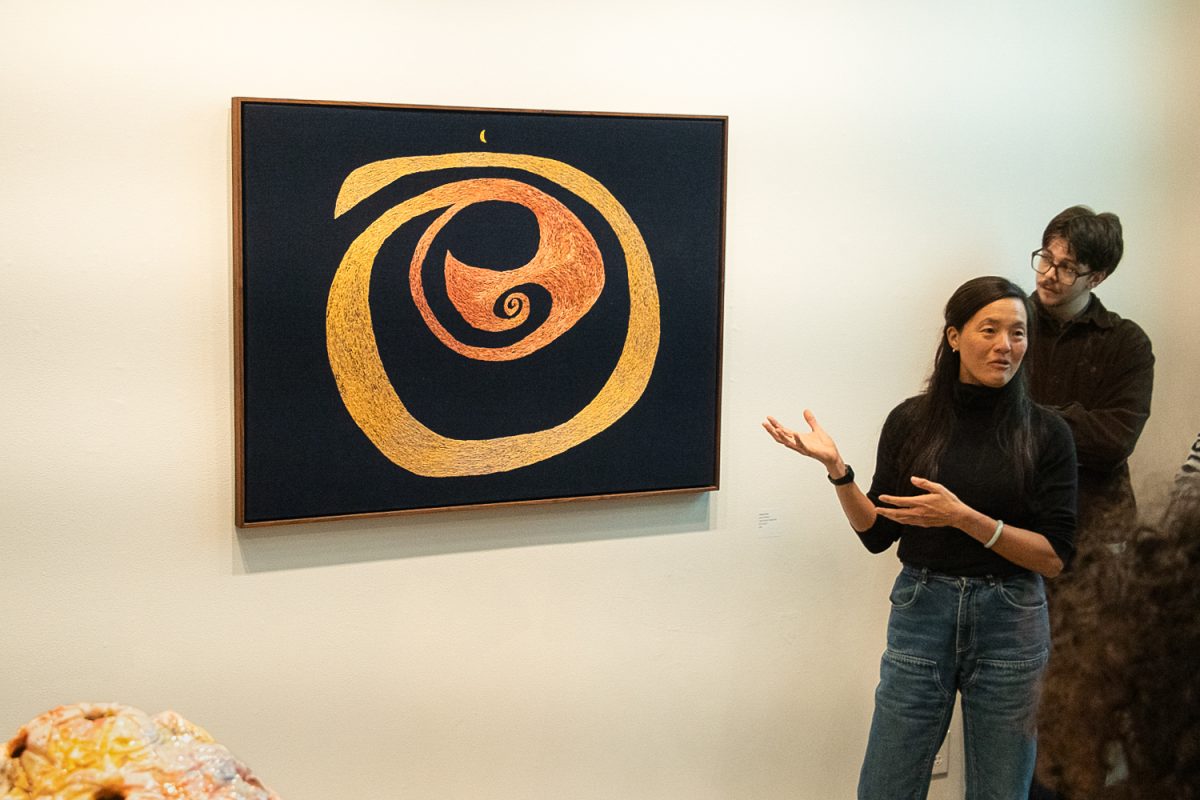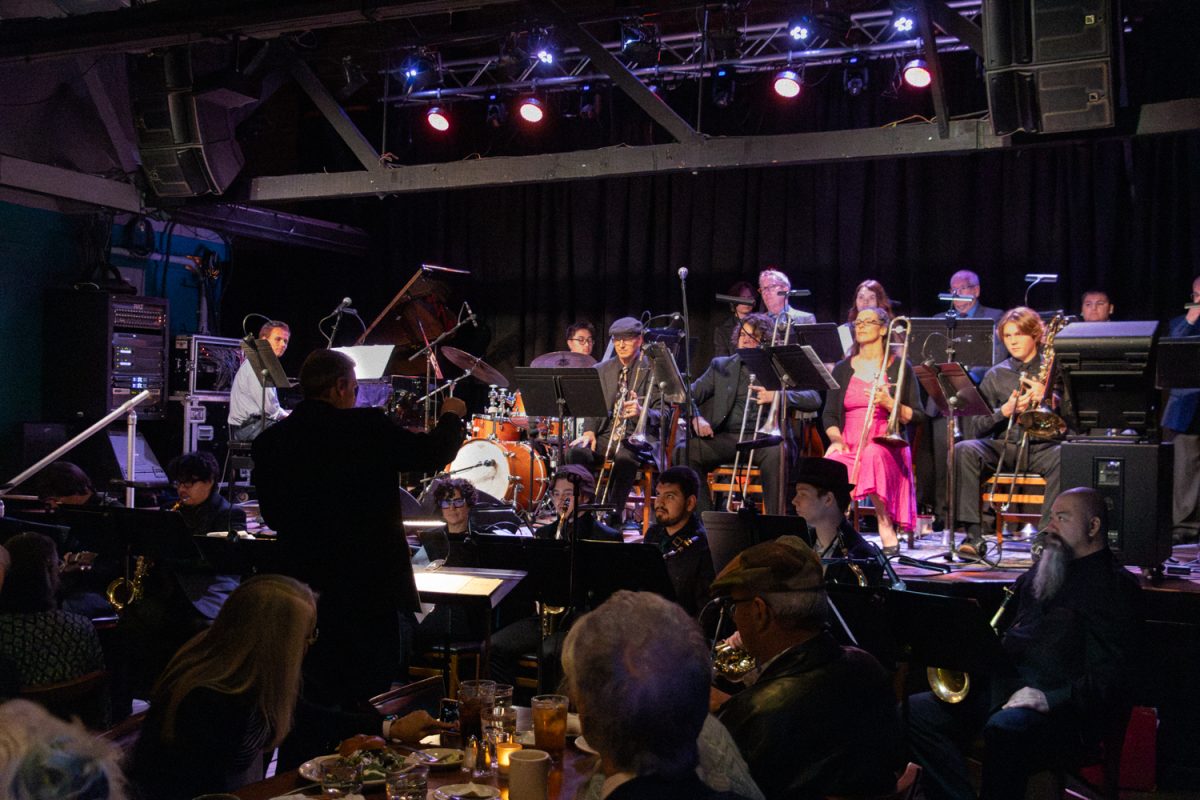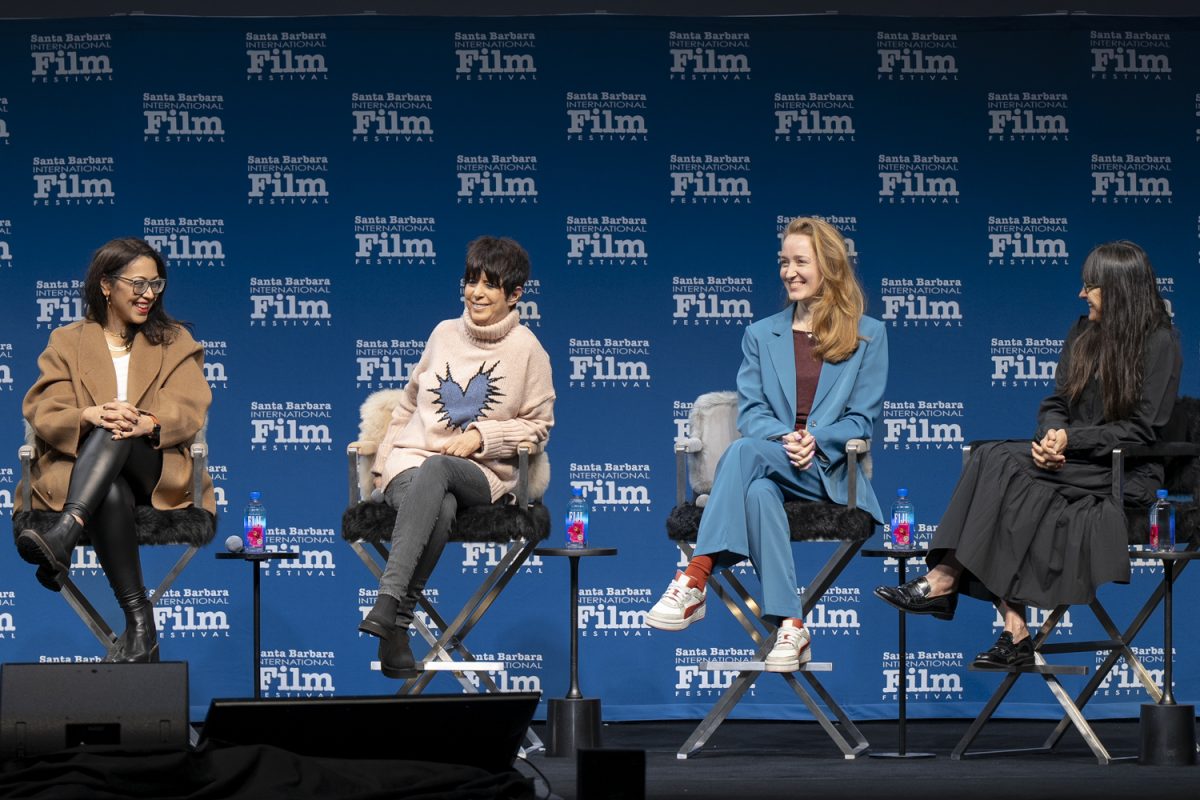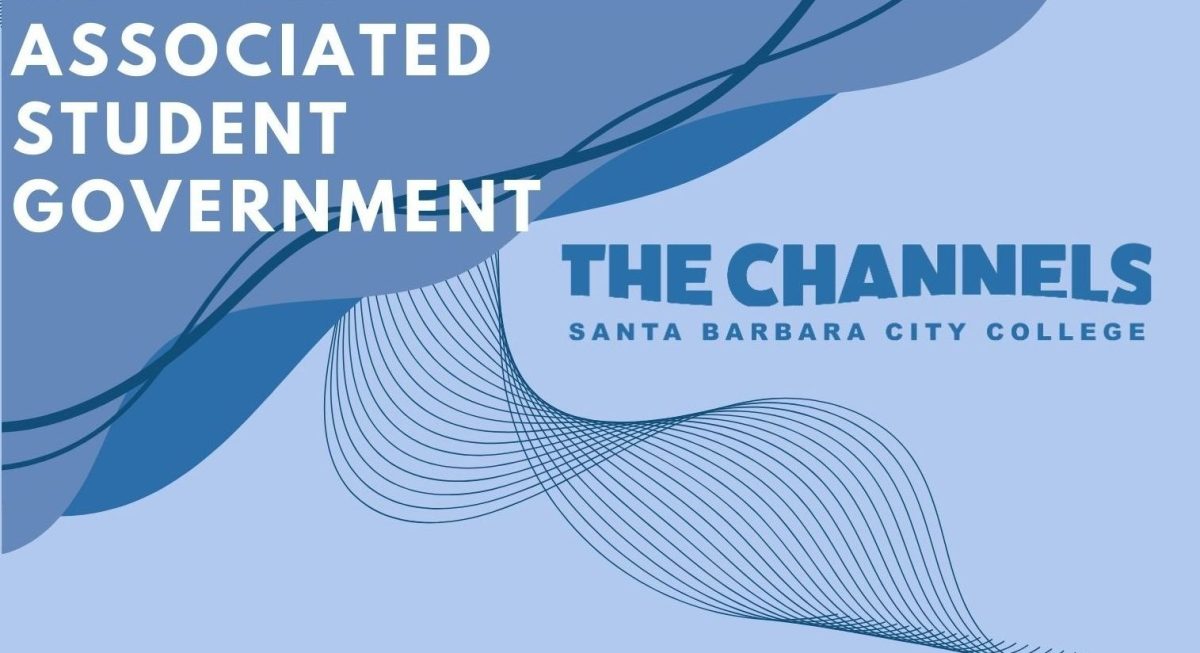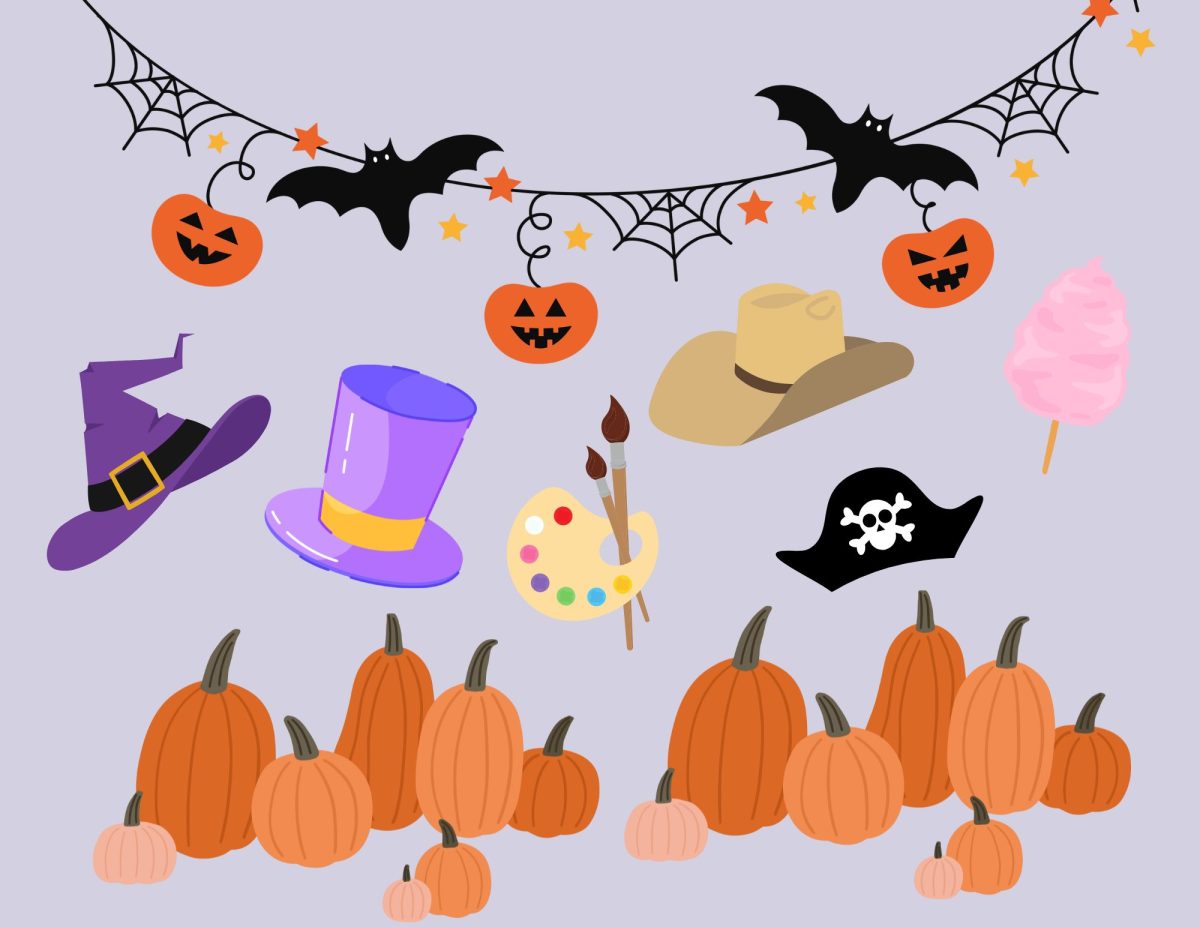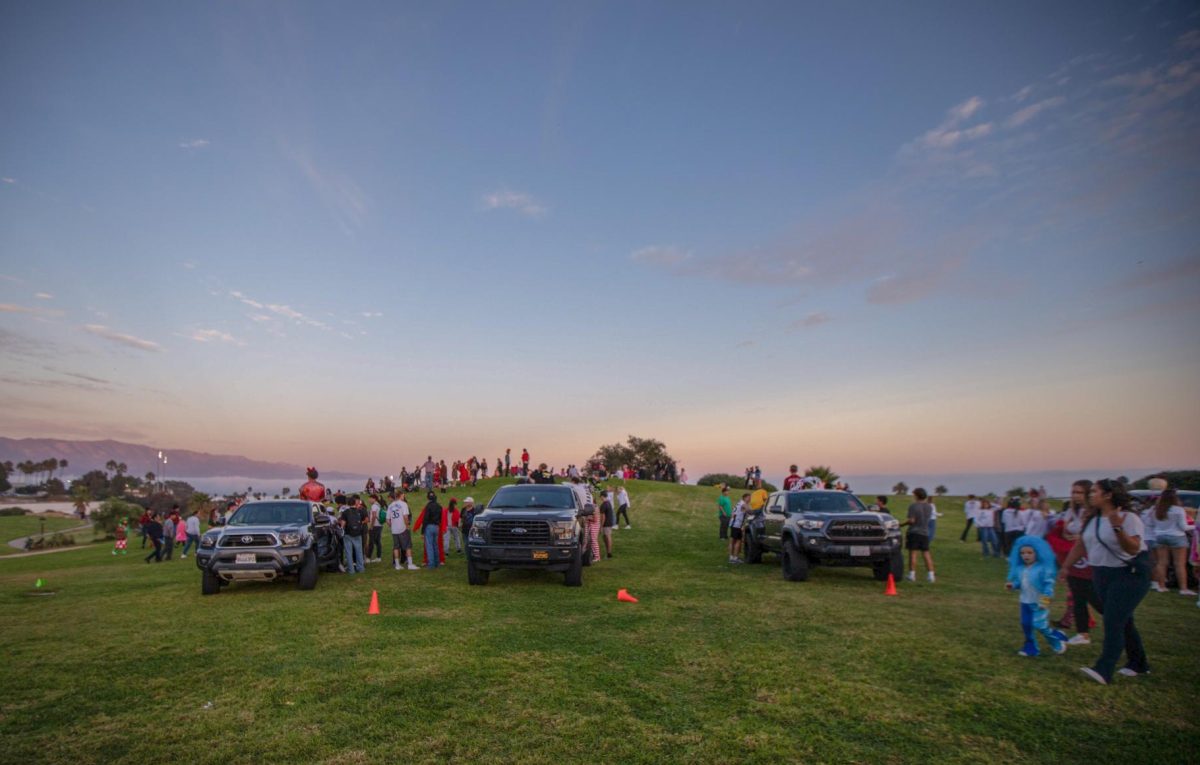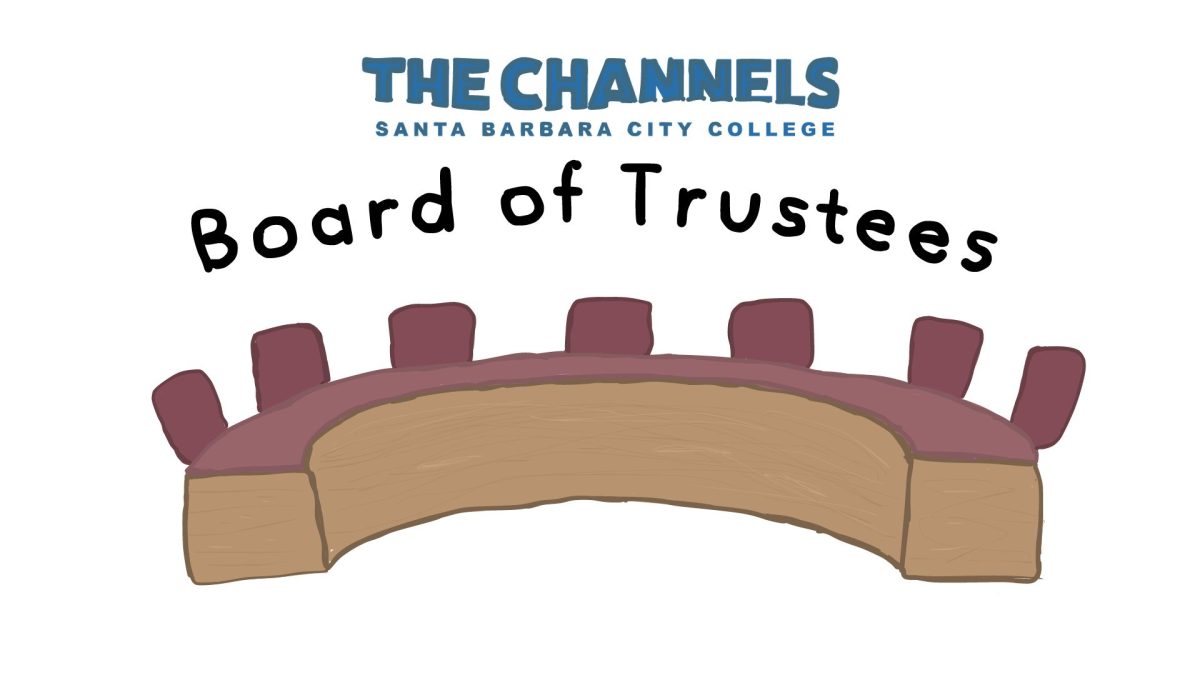Since Dec. 1, 2021 City College’s Atkinson Gallery has been presenting Cosmovisión Indígena Art Lab 2.0, displaying artwork by Getty Pacific Standard Time artist advisors Tanya Aguiñiga and Porfirio Guiterrez.
This exhibition features the history and science of cochineal dye-making created from the traditional red dye, carmine, that comes from the cochineal insect.
“We applied for a grant to do an exhibition on the intersection of Indigenous knowledge and contemporary art,” said Director of the Atkinson Gallery John Connelly.
The Getty Foundation’s project Pacific Standard Time is an exhibition that occurs every few years where many institutions across Southern California apply for a grant and if accepted they can present an exhibition.
Atkinson Gallery received this two year research grant for Cosmovisión Indígena which will be a part of the Getty Pacific Standard Time series, with the upcoming theme of art and science.
“We have two artists advisors, Profirio Guiterrez and Tanya Aguiñiga,” Connelly said, “these pieces use cochineal, a natural dye that grows on cacti, and we’re looking at how natural dyes have been used in traditional societies.”
Aguiñiga used materials such as abaca pulp, clay, alpaca, flax, succulents, iron, horsehair, cochineal, copper, gold, and human hair to create the beautiful work “Nopal”, resembling Aguiñiga’s home and heritage.
The artist chose these materials to showcase her exploration of the identity of her Mexican heritage while acknowledging Latin and Mesoamerican Surrealism.
Guiterrez created a piece with the Tapestry on Treadle Loom technique using wool, pericon, and cochineal. He calls this piece Continuous Line, Linea Continua bringing focus to “the reality of the Indigenous people of the Americas within the diaspora of migration; who draw and create new lines of tradition, despite barriers designed to obstruct their path.” stated in the Cosmovisión Indígena press release.
While the final exhibition will be held in 2024, Connelly plans to extend the exhibition outside of the Atkinson Gallery throughout the Humanities building and across campus.
Cosmovisión Indígena will be presented at Atkinson Gallery until Feb. 18, with the anticipation of its return featuring final pieces in 2024.


